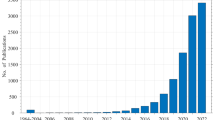Abstract
The Marine Pollution Monitoring System (MARPOLMON) constitutes a marine chemical component of the Global Environment Monitoring System (GEMS). The Programme covers all matters related to marine pollution research and associated monitoring activities required for the assessment of marine pollution. MARPOLMON constitutes the data-gathering activity, being directed to accurately determine levels of selected contaminants in several phases of the marine environment in various regions of the World Ocean. It is envisaged to utlize MARPOLMON generated data for the purposes of construction of mass-balances and making contamination and pollution assessments in regional and global contexts.
Data gathering, reporting and exchange requires stringent control of the quality of the information retrieved, which in turn dictates the development and testing of standard methodology, its widespread adoption and intercomparison of methods and feedback-refinement of orogonal methods or hypotheses.
Similar content being viewed by others
References
Berman, S. S. and Boyle, V.: 1985, ‘First Intercomparison Exercise for Trace Metals in Marine Sediments (NRC MS1/TM): Preliminary Report (Unpublished Report)’, NRC of Canada, Marine Analytical Committee Standards Programme.
Bewers, J. M., Dalziel, J., Yeats, P. A., and Barrow, J. L.: 1981, ‘An Intercalibration for Trace Metals in Sea Water’, Mar. Chem. 10, 173–193.
Bewers, J. M. and Windom, H. L.: 1983, ‘Intercomparison of Sea Water Sampling Devices for Trace Metals’, in D. S.Wong, E.Boyle, K. W.Bruland, J. D.Burton and E. D.Goldberg (eds.), Trace metals in the Sea, pp. 143–154, Plenum Press, New York.
Brugmann, L. and Niemisto: 1984, ICES-SCOR ‘Intercalibration Exercise for Pilot Sediment Studies in the Baltic Sea—Preliminary Report on the Result of the First Step’, Discussion Paper Tabled at ICES Marine Chemistry Working Group Meeting, Rostock, DDR, Feb. 1984.
Farrington, J. W., Knap, A. H., Davis, A. C., Livramento, J. B., Clifford, C. H., and Frew, N. M.: 1985, ‘ICES/IOC Intercomparison Exercise on the Determination of Petroleum Hydrocarbons in Biological Tissues (Mussel Homogenate)’, ICES M./E.33.
Goldberg, E. D. and Taylor, J. H.: 1985, ‘The VD Conspiracy’, Mar. Poll. Bull. 16, 1.
Holden, A. V., Topping, G., and Uthe, J. F.: 1982, ‘Use and Relevance of Analytical Intercomparison Exercises in Monitoring the Marine Environment’, Can. J. Fish. Aquat. Sci. 40 (Suppl. 2): 100–110.
IOC Manuals and Guides No. 7: Guide to Operational Procedures for the IGOSS Pilot Project on Marine Pollution (Petroleum) Monitoring.
IOC Manuals and Guides No. 13: Manual for Monitoring Oil and Dissolved/Dispersed Petroleum Hydrocarbons in Marine Waters and on Beaches.
IOC Technical Series No. 14: A Comprehensive Plan for the Global Investigation of Pollution in the Marine Environment and Baseline Study Guidelines, Unesco, 1976.
IOC Technical Series No. 22: Workshop on the INtercalibration of Sampling Procedures of the IOC/WMO/UNEP Pilot Project on Background Levels of Selected Pollutants in Open-Ocean Waters. Bermuda, 11–26 January 1980, Unesco, 1982.
IOC Technical Series No. 25: A Framework for the Implementation of the Comprehensive Plan for the Global Investigation of Pollution in the Marine Environment, Unesco, 1984.
IOC Technical Series No. 26: The Determination of Polychlorinated Biphenyls in Open-Ocean Waters.
Olafsson, J.: 1978, ‘Report on the ICES INternational Intercalibration on Mercury in Sea Water’, Mar. Chem. 6, 87–95, Unesco, 1983.
Reutergardh, L. and Litzen, K.: 1985, ‘Report on an Intercomparison Study of the Determination of Polychlorinated Biphenyls (PCB) Isomerids in Baltic Herring Oil’, ICES Marine Chemistry Working Group.
Thibaud, Y.: 1981, ‘Exercise d'Intercalibration. CIEM 1979, Cadmium en Eau de Mer’, ICES Coop. Res. Rep. No. 110, 26–54, International Council for the Exploration of the Sea, Copenhagen.
Topping, G.: 1984, ‘Summary Report on IOC/GEMSI Intercomparison Exercise for Metals in Biological Tissue’, Intergovernemental Oceanographic Commission, Paris, France, 9 pp. + 9 tables.
Topping, G.: 1985, ‘Quality of Data: with Special Reference to the Measurements of Trace Metals in Marine Samples’, Science of the Total Environment.
Topping, G. and Bewers, J. M.: 1984, ‘A Proposal for the Inclusion of Surveys of Metals in Sea Water in the 1985 ICES Baseline Study of Contaminants in the Oslo Commission and NATO Areas’, ICES CM/E.39. International Council for the Exploration of the Sea, Copenhagen.
Author information
Authors and Affiliations
Rights and permissions
About this article
Cite this article
Andersen, N.R., Dawson, R., Duinker, J.C. et al. Objectives, components and experiences in the development of The IOC Marine Pollution Monitoring System (MARPOLMON). Environ Monit Assess 11, 299–314 (1988). https://doi.org/10.1007/BF00394679
Issue Date:
DOI: https://doi.org/10.1007/BF00394679




